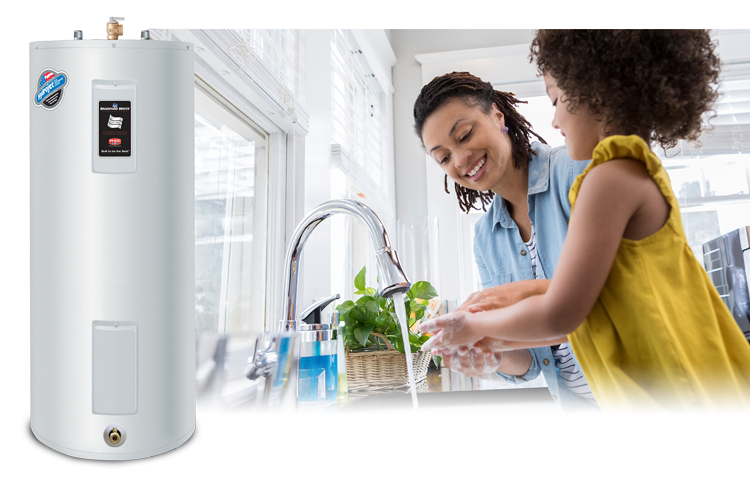Your water heater came with a set of instructions that detailed the proper maintenance methods for keeping this vital piece of equipment running properly and most efficiently. Unless you understand how to follow these instructions and why, it may be difficult to keep your heater in check for long. As water streams into your water heater, it can cause a buildup of things such as sediments, minerals, and dirt to settle on the bottom of the tank. As these build up, they can begin to detract from your water quality as well as the efficiency of the heater. Left unchecked, the water heater can begin to rust until it becomes necessary to replace the entire unit. Not only is this extremely costly, but it is also highly preventable.
Helpful Water Heater Tips There are a couple of things homeowners can do to help provide high efficiency and minimal maintenance for your tankless water heater.
Turn down the temperature! Many families are not aware of the importance of turning down the water heater temperature.It will help you save on the cost of the energy to heat water for those extra-long showers your family members may enjoy. Most homeowners have found that turning theirs down to 120 and below saves nicely on the monthly bill, while also going unnoticed by those who enjoy extra-warm showers and baths. Be sure to turn off turn off the power to the water heater before making this adjustment. If you do not know how to manage this task yourself, ask a professional plumber to make this adjustment for you.
Drain and Flush the Tank This is another thing that can be considered a do-it-yourself maintenance, but once again, if you are unfamiliar with the mechanics of this item in your home it is always best to have a professional plumber handle this regular task. The tank should be drained and flushed at least once per year.
Most traditional water heaters have a plastic drain valve located on the bottom of the tank that can easily be attached to a hose to drain the system.
1. Simply connect a garden hose to the valve and drain. Always take the utmost care with the valves as they can easily break.
2. Once the hose is attached turn the power to the water heater off at the circuit breaker, if gas, be sure to turn that off too.
3. The next step is to shut off the cold water supply to the tank. This is commonly located on the top of the water heater.
4. Begin opening the drain valve slowly in case of leaks around the valve. If you detect no leaks, open it fully until it completes drainage.
We are here to help at Plumbing Systems, Inc. in Lexington, KY! Contact us anytime 859-294-8080 with any questions or to schedule service.
Author: Richard Conrad
Source: Amazines
https://www.amazines.com/article_detail.cfm?articleid=6246521
Resources: https://www.bradfordwhite.com/water-heaters-homeowners/
https://www.hotwater.com/
Helpful Water Heater Tips There are a couple of things homeowners can do to help provide high efficiency and minimal maintenance for your tankless water heater.
Turn down the temperature! Many families are not aware of the importance of turning down the water heater temperature.It will help you save on the cost of the energy to heat water for those extra-long showers your family members may enjoy. Most homeowners have found that turning theirs down to 120 and below saves nicely on the monthly bill, while also going unnoticed by those who enjoy extra-warm showers and baths. Be sure to turn off turn off the power to the water heater before making this adjustment. If you do not know how to manage this task yourself, ask a professional plumber to make this adjustment for you.
Drain and Flush the Tank This is another thing that can be considered a do-it-yourself maintenance, but once again, if you are unfamiliar with the mechanics of this item in your home it is always best to have a professional plumber handle this regular task. The tank should be drained and flushed at least once per year.
Most traditional water heaters have a plastic drain valve located on the bottom of the tank that can easily be attached to a hose to drain the system.
1. Simply connect a garden hose to the valve and drain. Always take the utmost care with the valves as they can easily break.
2. Once the hose is attached turn the power to the water heater off at the circuit breaker, if gas, be sure to turn that off too.
3. The next step is to shut off the cold water supply to the tank. This is commonly located on the top of the water heater.
4. Begin opening the drain valve slowly in case of leaks around the valve. If you detect no leaks, open it fully until it completes drainage.
We are here to help at Plumbing Systems, Inc. in Lexington, KY! Contact us anytime 859-294-8080 with any questions or to schedule service.
Author: Richard Conrad
Source: Amazines
https://www.amazines.com/article_detail.cfm?articleid=6246521
Resources: https://www.bradfordwhite.com/water-heaters-homeowners/
https://www.hotwater.com/

